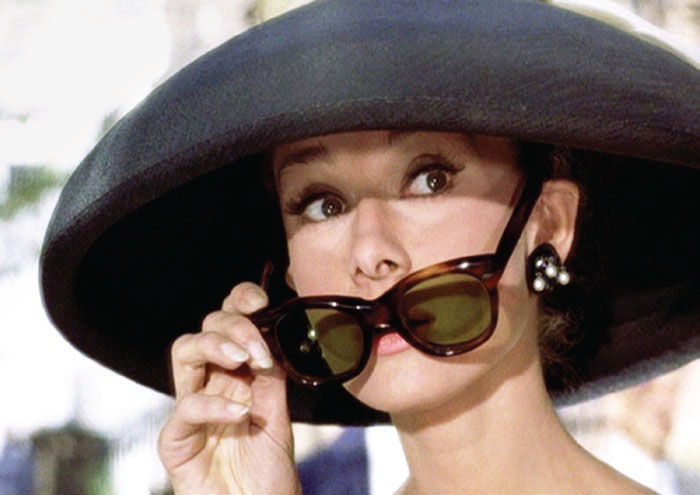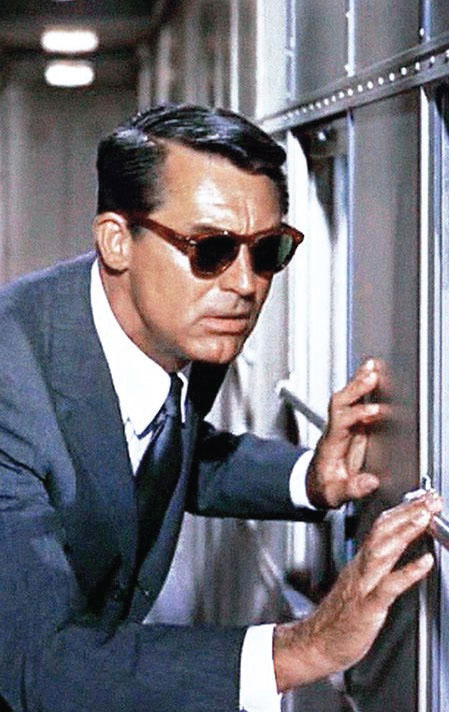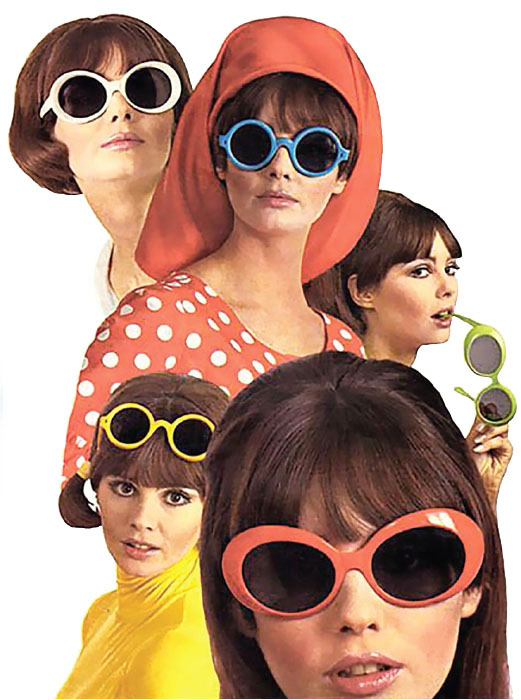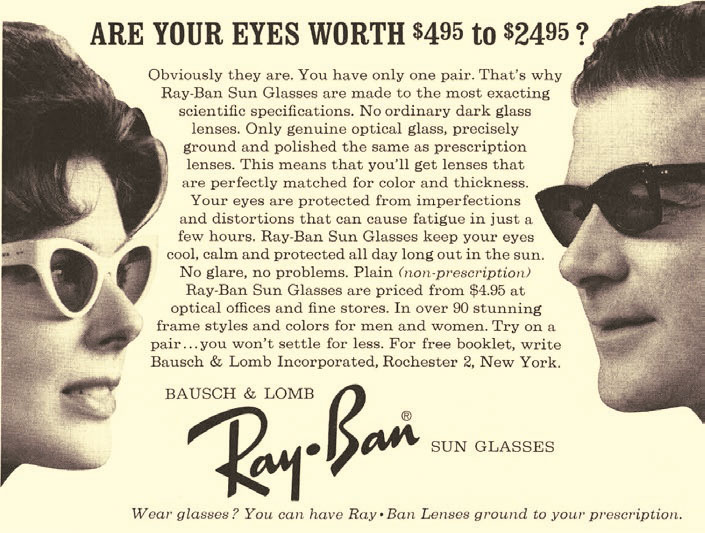Shades of Cool - Page 4
 |
|
|
Southern California machinist John Biondo was shocked first hand by a meltdown back in the mid-1950s. "I went out and bought myself a nice, new pair of plastic sunglasses at the drugstore," he recalled. "Not long after, on a hot summer day, I accidentally left them on the metal dashboard of my '54 Pontiac when I went in to work.
"When I came out, all that was left was a gooey, melted mess! I learned my lesson, and soon went out and bought a pair of real sunglasses—Ray-Bans."
Fabulous '50s come alive
As plastics became more refined, they opened the door to mid-century designers eager to test the limits with frames made of acetate, nylon, and acrylics.
The sunglasses star of the 1950s was the flattering cat-eye frame, which showed up in clear Lucite frames, and color ones too—shades of pink, lavender, and rose gold. They were also accented with finely engraved metal details, embedded with glitter, and inset with every kind of jewel, from rhinestones to rubies.
Describing unique favorites from her collection, Marjorie VanderHoff says, "One pair has elongated octagons on the side and tiny pinstripes with rhinestones. Another prized pair features pearl-colored iridescents from Italy with green Polaroid lenses."
 |
"Vintage glasses are functional art," she says, "even the weight of a pair of vintage glasses transports me to another time."
One of the most marvelous creations to come out of the mid-century are socialite and art collector Peggy Guggenheim's extravagant bat-wing and butterfly glasses, commissioned in 1948 especially for her by American artist Edward Melcarth.
And Hollywood, as always, immortalized the latest good looks of the period, from debonair actor Cary Grant in his Tart Arnel green-lensed shades in 1959's 'North by Northwest' to rebellious teens and rock 'n' roll idols like James Dean and Elvis Presley.
The swinging '60s
Heading into the 1960s, fashions began trending away from the '50s look. It was a decade of change, influenced by politics, music, and a generation eager to change the world.
In the 1960s, "Age-old norms of conformity and sexuality crumbled. Hemlines soared as if propelled upward by Mercury rockets, as fashion kept pace with the zeitgeist," Moss Lipow wrote in 'Eyewear.'
 |
Sunglass designers reached for the avant-garde, experimenting with bigger, bolder shapes that twisted and turned, forming scallops, geometrics, some covering the whole eye and beyond. One particularly flamboyant design framed the eyes with giant molded plastic eyelashes.
A hallmark of 1960s design was a focus shift to color and texture over decorative elements and details. Consider the bold, tortoise shell cat-eye sunglasses worn by Audrey Hepburn's character Holly Golightly in the 1961 film 'Breakfast at Tiffany's.'
Wearing one of the most famous sunglasses ever worn, Golightly's look epitomized '60s sophistication, her 'Manhattan' eyewear pairing perfectly with her simple strand of pearls and 'little black dress.'
The '60s also loved big, boxy squares and Op-Art styles made famous by models like Twiggy, and introduced Italian wraparound sunglasses, a favorite of Marcello Mastroianni in Fellini's classic film '8½.'
In a brilliant '60s ad campaign worthy of Don Draper, the Foster Grant company posed the question, 'Who's that behind those Foster Grants?' in a series of magazine and TV ads featuring big-name stars of the day—from Peter Sellers to Raquel Welch.
 |
|
|
For your eyes only
Searching for a special look? Mid-century designs are on-trend today with every type and style. Search for shops that carry vintage frames that have never been worn; these are known in the business as 'new old stock' (NOS).
Specialty boutiques like Old Focals in South Pasadena, RetroSpecs & Co. in San Francisco, and online retailer Warby Parker are excellent sources. Or purchase optical-ready repros or retro-inspired frames in collections from Luxottica (which makes frames for Armani, Chanel, and Prada), Ray-Ban, or Tom Ford, all of which carry high-quality offerings.
Reproductions of classics, cat-eyes, and celebrity eyewear can also be purchased in every price range from online outlets like EyeBuyDirect, SelectSpecs, Smartbuyglasses, and Zenni Optical.
Most vintage glasses can be custom fitted with prescription opticals, progressives, or tinted lenses that offer modern safety factors and provide ultraviolet protection.
Today, the excitement and imagination of the 20th century is coming full circle with 21st century designs that incorporate optical advancements, processing methods, and lighter, stronger materials.
But time and time again, designers return to mid-century popular culture for inspiration—to an era when everything from subtle shades to bold designer statements defined 'cool.'
Photography: Francisco Hernandez, Joe Finkle, Frank Worth; and courtesy Marjorie VanderHoff, Adriene Biondo Archive, Rico Tee Archive




